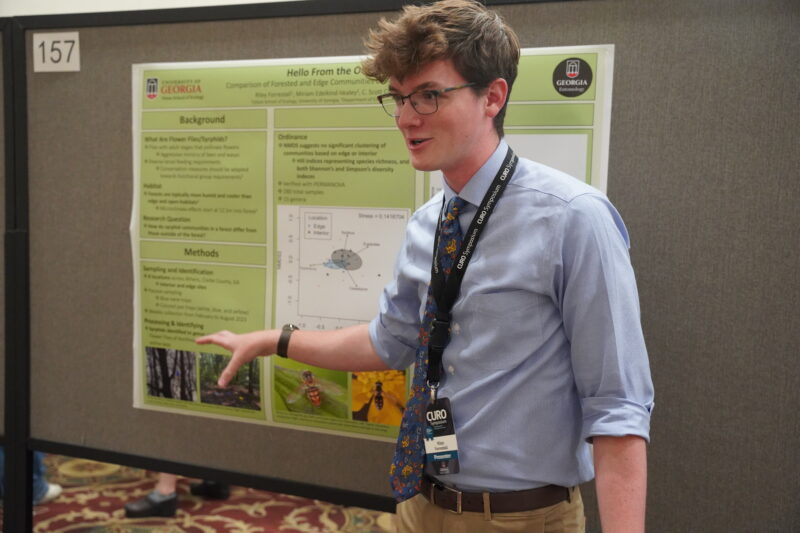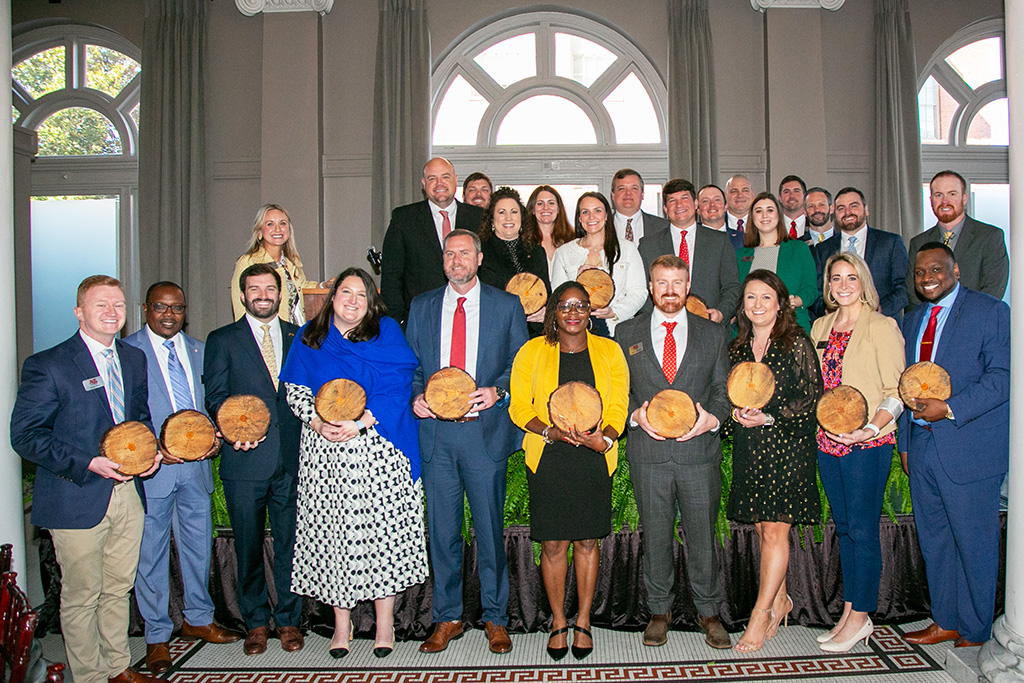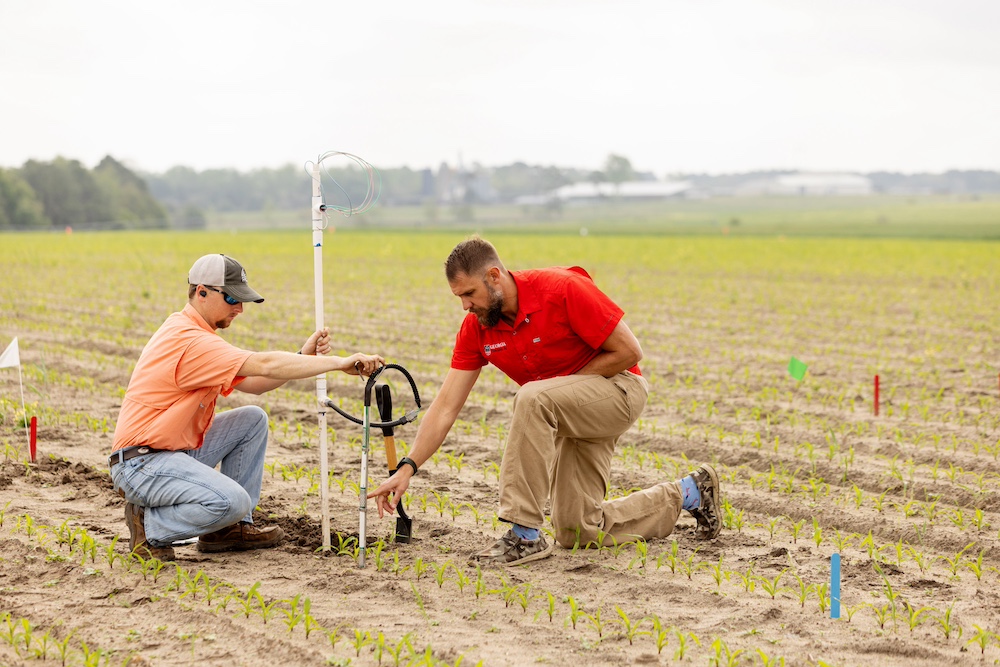By Judy Purdy
University of Georgia
Athens, Ga. -- The University of
Georgia's external research funding grew 6.8 percent during the
2004 fiscal year, totaling a record $159.9 million. The figure
was $10.1 million higher than the $149.8 million received in 2003.
Research support at UGA has increased 56.8 percent during the
past five years, said Gordhan L. Patel, vice president for
research and associate provost. This funding is composed of
contracts, grants and agreements from federal, state and
corporate sources as well as from private funding agencies.
Patel credits UGA faculty for the continuous growth in research
funding. He cites a strong record of research, collaboration and
innovation. This solid record, he says, makes faculty proposals
highly competitive with those of other scholars at state,
national and international levels.
"The research capacity of the University of Georgia continues to
grow in both quantity and quality. And that is very good news for
this institution and the state of Georgia," said President
Michael F. Adams.
'Extraordinary'
"Given the impact of budget cuts and vacant faculty positions,
it's extraordinary that we have seen another increase in research
funding," Adams said. "This good news is a testament to the
quality of the proposals generated by UGA faculty and the hard
work of the research administrative team."
While research figures are up, UGA's total external funding,
which includes research, instruction, public service and
outreach, fell 1.2 percent, ending the year at $227.8 million,
said Regina A. Smith, associate vice president for research.
"We're pleased that external awards from federal agencies grew
6.6 percent and funds from industry and corporations grew 23.3
percent," Smith said. "Growth in these two areas helped offset
significant decreases in state and private foundation funding."
The university, which receives a substantial share of external
funding from federal agencies, had double-digit increases from
the National Science Foundation (up 22.6 percent to $27.2
million) and the U.S. Department of Agriculture (up 30.5 percent
to $20.4 million).
Big bucks
Here's a sampling of FY 2004 grants and contracts:
A $6.7 million, five-year grant from the National Center for
Research Resources at the National Institutes of Health and
co-sponsored by the NIH National Cancer Institute. The grant is
to create a federal center for studying a class of complex
carbohydrates found in cell surface molecules that may lead to
treatments for cancer and Parkinson's disease. J. Michael Pierce,
a faculty member in the Complex Carbohydrate Research Center, is
the principal investigator.
A $5.3 million, five-year NSF grant (of $34.6 million awarded
statewide) for the Partnership for Reform in Science and
Mathematics (PRISM) to improve student achievement in northeast
Georgia for grades P-12. Michael Padilla, director of the College
of Education's educational partnerships, is the PI.
A $3.9 million, four-year NSF grant to study genes involved
in growth and differentiation of plant tissue. Plant biologist
Michael Scanlon is the PI.
A $1.5 million grant from the Georgia Department of Human
Resources to train family independence case managers who work
with such programs as Medicaid and food stamps. Lettie Lockhart
in the School of Social Work is the PI.
A $1 million, four-year NSF grant to expand nanofabrication
technology for applications in biosensing. The PIs are Yiping
Zhao, physics and astronomy department, and William Kisaalita and
Guigen Zhang, both of the biological and agricultural engineering
department.
$1.2 million total for two NIH grants to enhance the Center
for Family Research, which develops and implements effective
preventive intervention programs for rural African-American
families. Gene Brody and Velma Murry, both of the Institute for
Behavioral Research, are the PIs.
A $0.96 million, one-year award from the Governor's Office of
Highway Safety for the Georgia Traffic Injury and Prevention
Institute. Don Bower, a professor in family and consumer
sciences, is the PI.
Still big
Grants in areas such as humanities, fine arts and student
training can be considerably less in dollar amounts, but are
equally competitive and prestigious.
Zolinda Stoneman, who directs the Institute on Human
Development and Disability, received a two-year, $250,774 grant
from the U.S. Department of Justice to provide training for
judicial system personnel in recognizing and prosecuting crimes
against people who are elderly or disabled.
Paul Sutter, a history professor, received a one-year,
$34,900 grant from the Joseph W. Jones Ecological Research Center
to prepare an oral history of the Stoddard-Neel method of
managing the longleaf pine ecosystem of the Southern Coastal
Plain.
Microbiologist Daniel Colley, who directs the Center for
Tropical and Emerging Global Diseases, received a $275,400
Ellison Medical Foundation grant that enables students and
postdoctoral scholars to take part in international research
training.
Research funding is an important benchmark among the nation's
major research universities, Patel said. UGA continues to rank
among the top 100 public and private research universities for
federal research and development expenditures. It placed 89th in
the most recent NSF rankings, based on figures from FY 2002.
(Judy Purdy is the director of communications with the
University of Georgia Office of the Vice President for Research
and associate provost.)






